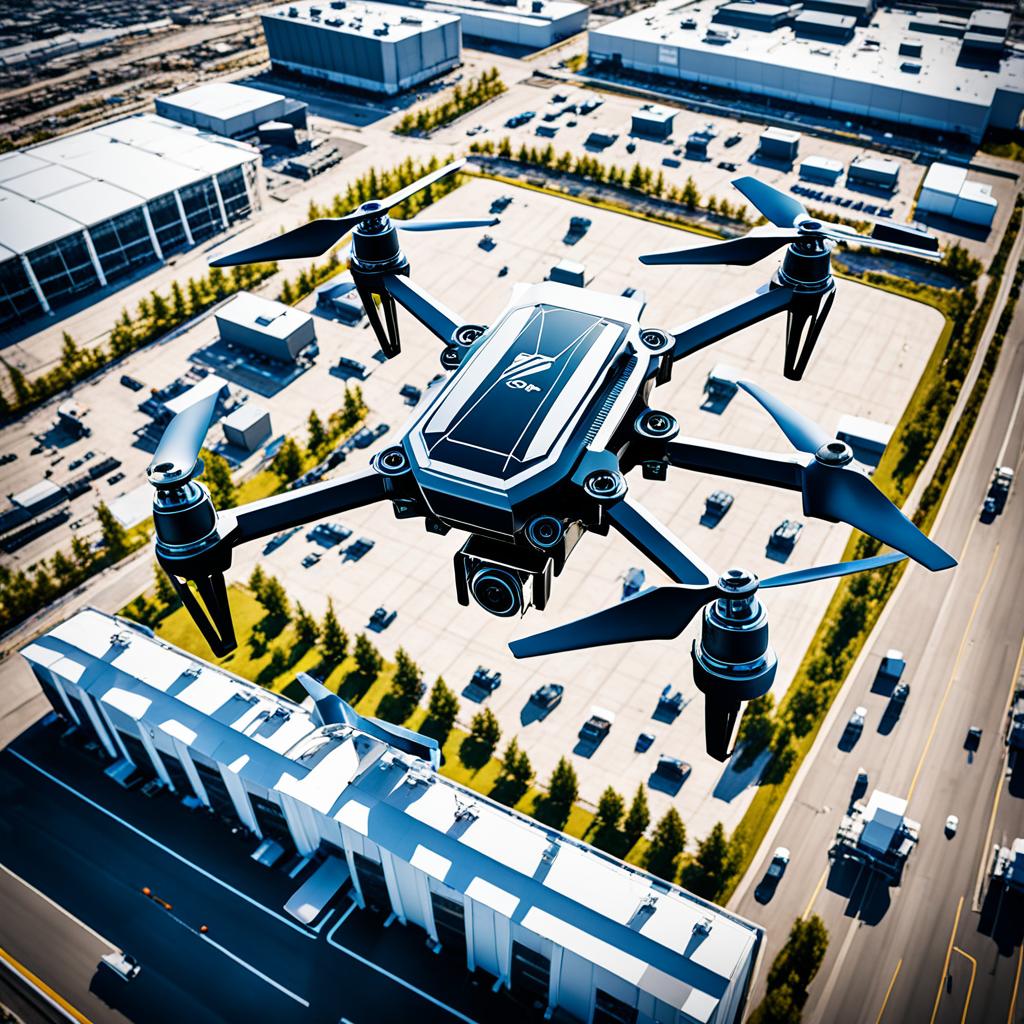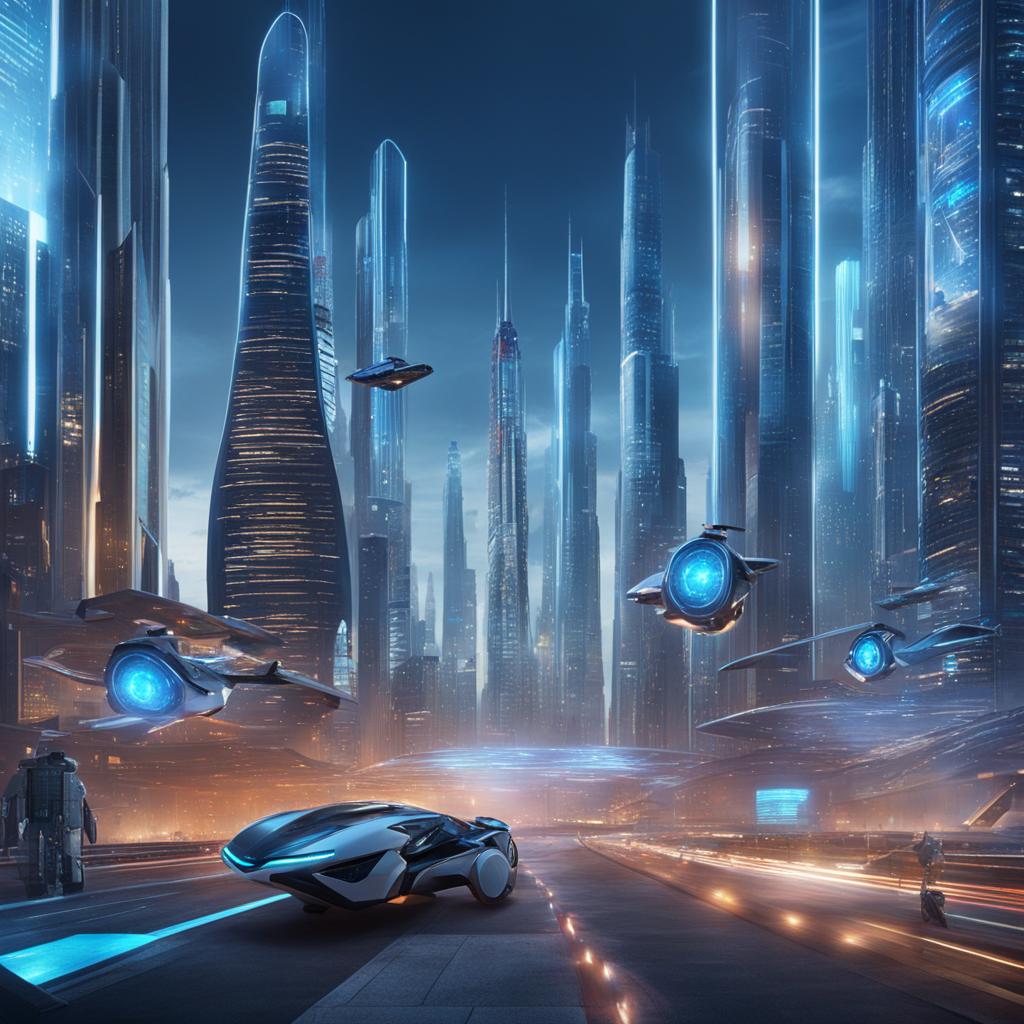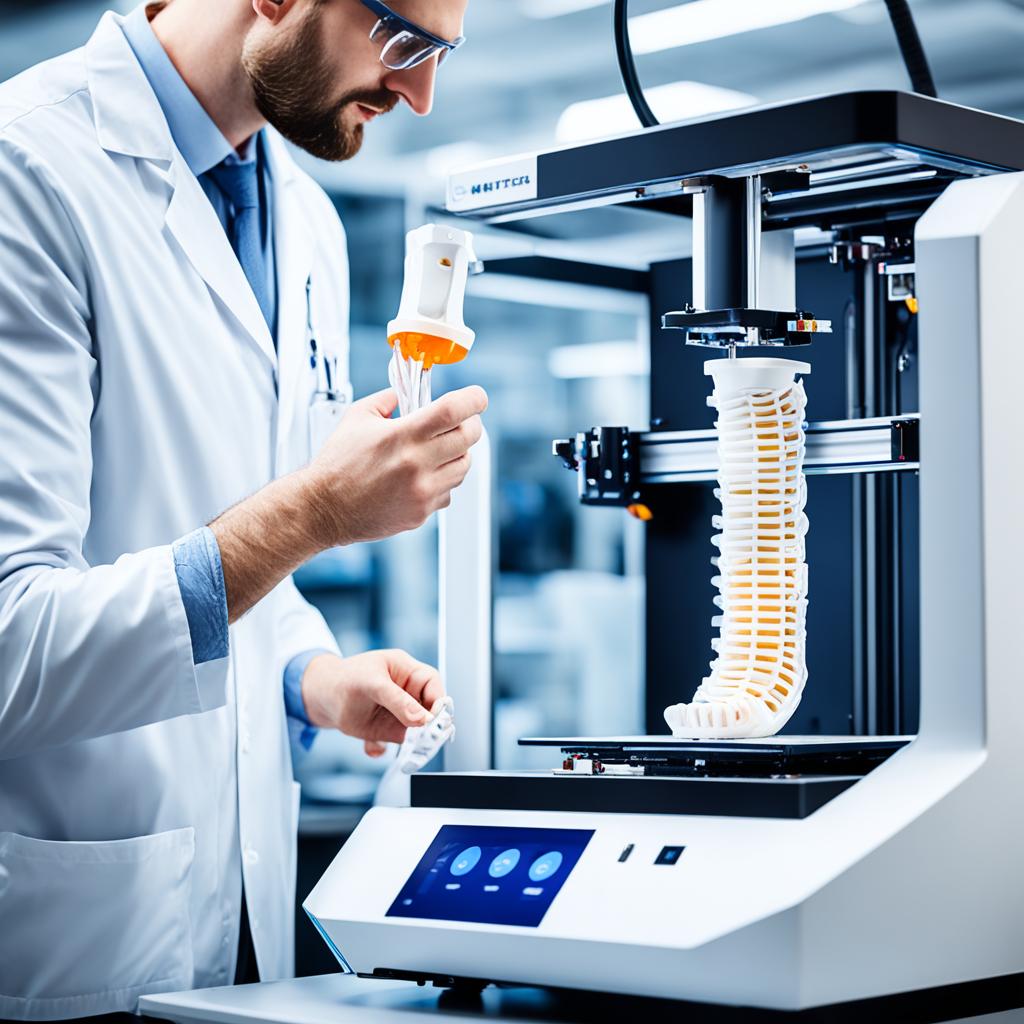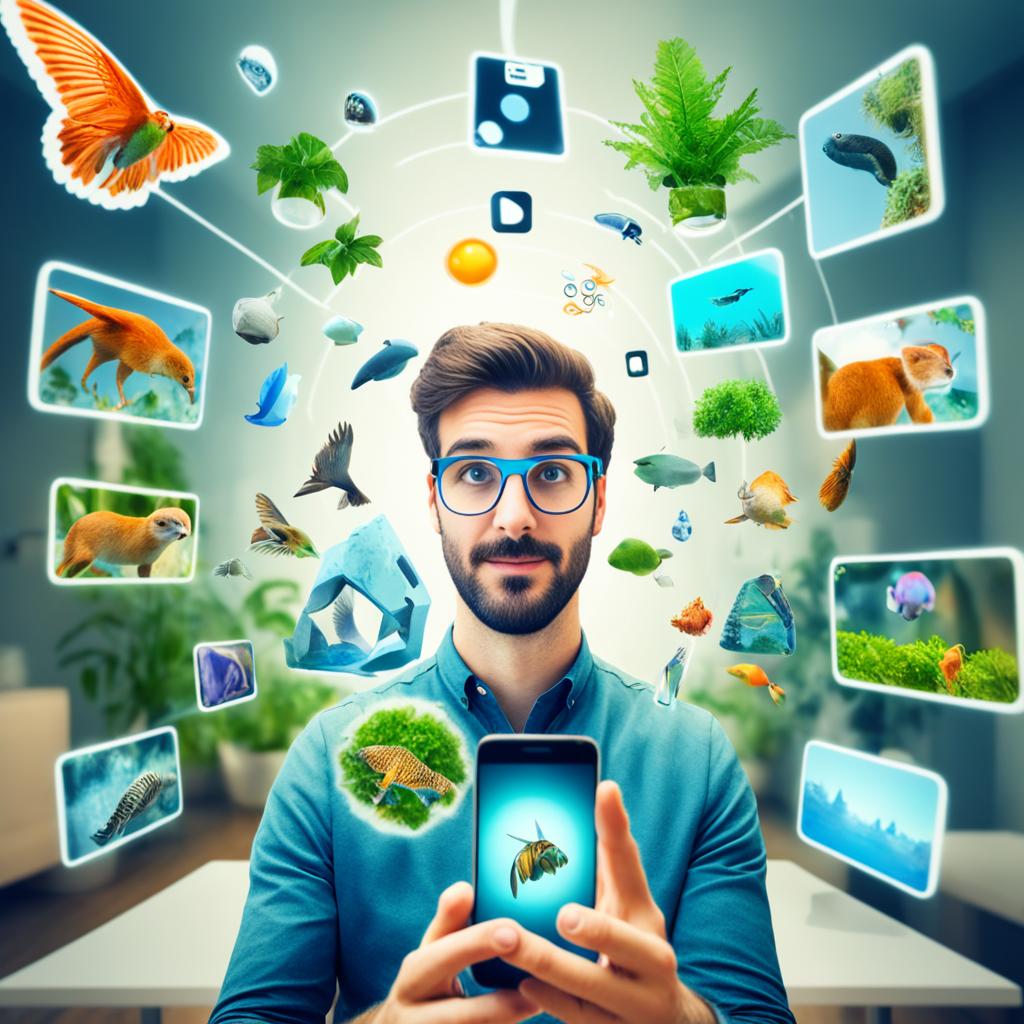The evolution of mobile technology is profoundly impacting the way we live, work and interact. To the innovations in mobile technology are driving the advancement of revolutionary mobile devices, innovative mobile apps and trends in mobility that are transforming the world around us.
PwC has compiled a list of eight essential technologies for the future – those that will matter most to businesses across all sectors over the next 5 years. According to PwC's 24th CEO Survey, 38% of Brazilian leaders said they were concerned about the accelerated pace of technological evolution and 42% about cyber threats. These technologies have the potential to globally impact businesses, employees and customers, bringing significant benefits to society as a whole.
The eight essential technologies that are changing the world are:
- Blockchain
- Drones
- 3D printing
- Artificial intelligence
- Internet of Things
- Augmented Reality
- Virtual reality
- Robotics
The convergence between these technologies is an important trend, as they combine their capabilities to create powerful business solutions. O future of mobile technology is promising, and we need to be prepared to take advantage of the opportunities and face the challenges that these technologies bring.
Main Conclusions:
- Mobile technologies are revolutionizing the way we live and work.
- Innovations in mobile technology are driving the development of revolutionary mobile devices It is innovative mobile apps.
- The convergence of technologies such as Blockchain, Drones, 3D printing, Artificial intelligence, Internet of Things, Augmented Reality, Virtual reality and Robotics creates powerful business solutions.
- O future of mobile technology presents opportunities and challenges that require preparation and monitoring of trends.
- O impact of mobile technologies It extends to all sectors and brings significant benefits to society.
Blockchain
The technology Blockchain is a distributed digital database that uses software algorithms to record and confirm transactions securely, reliably and anonymously. This innovative technology has the potential to revolutionize digital commerce, making it autonomous and more secure.
In Blockchain, the record of transactions is shared between several parties, ensuring the immutability of the information entered. This feature offers the necessary security for recording transactions and creates trust in the commercial exchanges carried out.
With application in various sectors, Blockchain technology has the potential to positively impact digital transactions. By providing greater security, transparency and traceability, Blockchain can help combat fraud and reduce the need for intermediaries in financial transactions, for example.
Furthermore, Blockchain's distributed technology offers decentralization of transactions, eliminating the need for a centralized authority to validate and record transactions. This contributes to the autonomy and efficiency of digital commerce.
See too:
By enabling secure and autonomous transactions, Blockchain provides a solid foundation for the future of digital commerce. This technology continues to evolve and can bring significant benefits to society as a whole.

Drones
You drones are unmanned aerial vehicles that can be remotely controlled or programmed to perform specific tasks. These devices have been widely used in different areas such as surveillance, research, sport, cinematography and even product deliveries.
Drone technology is constantly evolving, offering innovative solutions for diverse needs. In the field of surveillance, for example, drones are used to monitor areas that are difficult to access, providing a complete aerial view and greater efficiency in identifying possible risks or threats.
Furthermore, drones have proven effective in delivering products, especially in remote or difficult-to-access locations. Large e-commerce companies, such as Amazon, are exploring the use of drones to speed up and make the process of delivering goods to customers faster and more efficient.

Drones are changing the way we interact with airspace and offering new possibilities in terms of surveillance and transport logistics.
As technology advances, drones are becoming more accessible in terms of cost and ease of use. This has resulted in the popularization of these devices, expanding their applications in different sectors.
Use of Drones
O use of drones in agriculture, for example, it has proven to be a viable alternative for monitoring plantations, optimizing the application of agricultural pesticides and identifying areas that require more care or irrigation. Additionally, drones can be used to map hard-to-reach areas or perform inspection tasks on structures such as wind energy towers or transmission lines.
In the film industry, drones are widely used to capture stunning aerial images. These devices offer the possibility to create unique scenes and tell stories in a visually impactful way.
In short, the use of drones It has proven to be a promising technology, offering countless applications and possibilities. With the continuous advancement of technology and improvement in regulations, the use of drones is expected to become increasingly common in various sectors, providing innovative and efficient solutions for different needs.
3D printing
A 3D printing is an essential technology that is transforming the way products are manufactured. It allows the creation of three-dimensional objects from digital models, using successive layers of materials. This technique, also known as additive manufacturing, uses innovative materials, such as plastic, metal, glass and wood, to create personalized products and prototypes quickly and accurately.
3D printing has applications in several sectors, from the automotive industry, where specific parts can be produced on demand, to healthcare, where customized prosthetics and implants can be manufactured. Furthermore, this technology offers greater flexibility in production, allowing the creation of complex and personalized designs that would be difficult or impractical to produce using traditional methods.
Rapid prototyping is one of the main advantages of 3D printing. With this technology, companies can create functional prototypes in the short term, accelerating product development and reducing costs. You can test different designs, make adjustments and refinements before investing in large-scale production tools.
A additive manufacturing it also contributes to sustainability, as it reduces material waste by producing only what is necessary. Furthermore, 3D printing makes it possible to use recyclable materials and adopt more efficient processes, contributing to reducing environmental impact.
“3D printing is a revolutionary technology that is changing the way we manufacture products. It offers a unique combination of customization, speed and flexibility, allowing the creation of complex objects with great precision. This technology has the potential to drive innovation across multiple industries and open up new possibilities for the future of manufacturing.”
3D Printing Applications
3D printing has diverse applications in different sectors. Below are some examples of how this technology has been used:
- Custom automotive parts manufacturing
- Production of custom-made prostheses and implants in the healthcare sector
- Creation of architectural models and engineering models
- Development of personalized jewelry and accessories
- Manufacturing of highly complex aerospace components
The image above illustrates the 3D printing process and the creation of a three-dimensional object from layers of material.
Advantages of 3D Printing
3D printing offers several advantages over traditional manufacturing methods. Some of the key advantages include:
- Personalization: 3D printing allows the creation of personalized products according to individual needs and preferences;
- Rapid prototyping: this technology accelerates product development by allowing the rapid creation of functional prototypes;
- Design flexibility: 3D printing makes it possible to create complex and optimized designs that would be difficult to produce using traditional methods;
- Sustainability: the additive manufacturing reduces material waste and allows the use of recyclable materials;
- Cost savings: 3D printing can reduce production costs by eliminating the need for specific tools and molds.
3D printing is revolutionizing the way products are manufactured and offers enormous potential for innovation in several sectors. With the continuous evolution of this technology, we can expect new applications and advances that will positively impact the industry and society as a whole.
Artificial intelligence
A Artificial intelligence (IA) and the Machine Learning are technologies that focus on developing computer programs capable of learning, understanding, reasoning, planning and making decisions. These technologies have the potential to revolutionize several sectors and create relevant products and services for society.
AI offers a range of opportunities to improve and automate processes in areas such as healthcare, finance and security. For example, in healthcare, AI can be used to analyze medical images, diagnose diseases and suggest personalized treatments. In the financial area, AI can assist in detecting fraud, analyzing risks and making investment decisions.
“Artificial Intelligence has the potential to create more opportunities than threats.”
The Covid-19 pandemic has raised awareness of the importance of AI, with many organizations realizing its value in solving complex challenges. A recent survey revealed that 94% of respondents believe AI will help create more opportunities than threats.
A automation Driven by AI is also transforming the way we work. Manually intensive tasks are being automated, allowing businesses to be more efficient and productive. That automation It can free employees to focus on higher-value activities, such as data analysis and strategic decision-making.
Opportunities and Threats
AI offers exciting opportunities to improve our lives and drive significant advances across diverse sectors. However, it also raises legitimate concerns about job losses, data privacy and ethics. It is essential to consider the social, ethical and economic impacts of implementing AI and ensure it is used responsibly and for collective benefit.
To make the most of the potential of AI, it is necessary to invest in training, research and development. Governments, companies and academic institutions must work together to create an environment conducive to innovation and the advancement of AI.
| Artificial Intelligence Opportunities | Artificial Intelligence Threats |
|---|---|
|
|
Artificial Intelligence is a promising technology that is shaping the future. It is important that governments, companies and individuals come together to explore their potential ethically and responsibly, ensuring that benefits are maximized and threats minimized.

Internet of Things
A Internet of Things (IoT) is a technology that is transforming the way we interact and use our devices on a daily basis. It is a system for connecting physical objects to the internet, allowing these objects to exchange data and information in real time.
With the IoT, it is possible to connect a wide variety of devices, such as smartphones, household appliances, vehicles and even sensors in industrial environments. This interconnectivity offers numerous possibilities and benefits:
- Process optimization: A IoT allows devices to communicate with each other, making it easier to automation and the optimization of various processes. For example, a smart lighting system can automatically adjust the intensity of lights based on ambient light levels.
- Security improvement: IoT-connected devices can provide greater security in several aspects. For example, motion sensors can trigger alarms in case of break-ins, and security cameras can provide real-time remote surveillance.
- Reducing waste of resources: With IoT, it is possible to monitor energy and resource consumption, identifying areas of waste and allowing the implementation of measures to reduce it. This contributes to sustainability and environmental preservation.
- Improved quality of life: IoT can bring significant benefits to people's quality of life. For example, internet-connected devices can provide real-time information about air quality, noise pollution and other environmental factors, helping people take steps to improve their well-being.
Data collection and analysis are essential elements of IoT. This technology allows devices to collect a wide range of data, from environmental information to health data, which can be used for analysis and decision-making purposes. This data can provide valuable insights to improve processes, develop products and provide more efficient and personalized services.
The image below illustrates the connecting devices through the Internet of Things:
Augmented Reality and Virtual Reality
A Augmented Reality (RA) and the Virtual reality (VR) are technologies that provide immersive experiences in digital environments. AR overlays digital information on the real world, while VR creates simulated environments. These technologies have applications in several areas, such as games, training, design, health and entertainment. They offer new ways for people to interact with the digital world, increasing immersion and communication capacity.
Augmented Reality (AR) is a technology that allows digital information to be superimposed on the real environment in real time. This technology uses devices such as smartphones, tablets or special glasses to project virtual elements into the physical world. AR offers interactive and immersive experiences, allowing users to view and interact with digital information directly in their field of vision.
Virtual Reality (VR), on the other hand, is a technology that creates immersive virtual environments through devices such as special glasses or helmets. Users are transported to a simulated world where they can explore and interact with virtual objects. VR offers a sense of presence and immersion, enabling immersive and realistic experiences in diverse contexts.
Application and Benefits
Augmented Reality and Virtual Reality have application in several areas and offer several benefits. Let's look at some examples:
Games and Entertainment
AR and VR have revolutionized the gaming and entertainment industry, offering immersive experiences and interactive. Users can engage in virtual worlds, participate in exciting games and explore new forms of entertainment.
Education and Training
In educational environments, AR and VR can be used to provide more engaging and interactive learning experiences. Students can explore complex concepts in a visual and practical way, making education more interesting and effective. Additionally, VR allows the simulation of training situations in areas such as medicine, aviation and industry, providing a safe environment for practicing and improving skills.
Design and Architecture
AR and VR have been widely used in design and architecture, allowing professionals to visualize projects in 3D and explore different options before execution. This provides a better understanding of the space and facilitates communication between teams and clients.
Health and Medicine
VR has been applied in the area of health and medicine to simulate surgeries, treat phobias and train health professionals. This technology allows immersion in realistic virtual environments, ensuring a practical and safe experience for professionals and patients.
In summary, Augmented Reality and Virtual Reality offer immersive experiences and interactive, allowing users to explore and interact with the digital world in innovative ways. With applications in diverse areas, these technologies have the potential to transform the way we learn, work, have fun and connect.
Conclusion
To the mobile technologies, such as Blockchain, Drones, 3D Printing, Artificial Intelligence, Internet of Things, Augmented Reality, Virtual Reality and Robotics, are changing the world and have the potential to revolutionize businesses and diverse sectors. These innovations are impacting the way we work, learn, communicate and do business.
O future of mobile technology is promising, and we need to be prepared to take advantage of the opportunities and face the challenges that these technologies bring. The convergence between these technologies is an important trend, as it combines their capabilities to create powerful business solutions.
The continuous development of these technologies and their correct application can bring significant benefits to society as a whole. It is important to be up to date and follow trends in the technological world to remain competitive and explore the full potential of mobile technologies.



